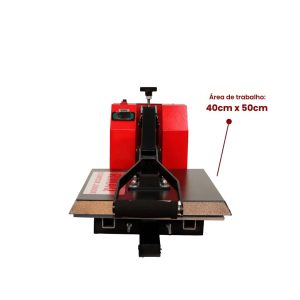Just as the hereditary length of chromosome maps can differ, one or two recombination landscapes have features (different molds of your Marey maps). To evaluate if or not these distinctions was in fact mathematically extreme, i normalized the brand new genetic lengths of the two charts or swimming pools of maps become opposed, from the rescaling both of them on the suggest well worth. Upcoming, to compare the design of both normalized Marey charts, all of our means are predicated on binning the fresh landscapes, symbolizing for each just like the an excellent histogram then applying an effective chi-squared take to with a conservative Bonferroni-fixed benefits endurance of 5% (Additional document step step one1). Brand new in depth techniques are told me into the More file 8.
Interference analyses
CO disturbance was modeled on structure of the Gamma model , plus a second path utilizing the sprinkling process whereby non-interfering path P2 COs basically put into those of P1. So the attributes of CO withdrawals with each other chromosomes had been modeled using two details: this new power nu off disturbance from the interfering path P1, together with ratio p away from COs designed from the non-interfering path P2. This new detailed implementation of maximum-probability method accustomed estimate the prices of these two details nu and p of your own design are revealed before .
Maize (Zea mays L.) has been the main topic of hereditary degree for over an effective century . It is a great diploid types (n = 10) which have old polyploid resource . The first hereditary linkage map during the maize centered on DNA markers are created having fun with maximum fragment length polymorphism indicators . Subsequently, even more hereditary maps was indeed published according to limit fragment length polymorphism, amplified fragment duration polymorphism, otherwise easy succession repeat ounts out of maize sequence recommendations, single nucleotide polymorphism (SNP) markers had been establish and you can employed for variety analysis and hereditary mapping for the maize [30, 32]. Recently, the Illumina ® MaizeSNP50 genotyping array comprising to 50,100000 SNPs was developed while the basic high-occurrence hereditary charts out of maize have been wrote having fun with a couple intermated recombinant inbred range populations . These types of maps composed around 21,100000 SNP indicators and you may were in contrast to the fresh maize genome site sequence generated on You inbred line B73, the prominent and more than advanced plant genome sequenced so far . Brand new B73 AGP v2 set up discusses 2.07 Gb of one’s whenever dos.5 Gb maize genome.
We seen altered segregation in all communities. Deviations on the questioned allele frequencies out-of 0.5 is shown during the More document 5. The ten chromosomes sent regions that have altered segregation. Communities and chromosomes differed within designs away from deformation. Simply in a few rare circumstances mutual has actually have been obvious – such as, throughout the Flint (CFF) populations, chromosome 2 tends to be altered toward common father or mother allele regarding centromeric nations and you can on the creator range alleles during the the distal areas of brand new long-arm. From inside the not one of your own places in which identified gametophytic (ga) genetics are located (chromosome 3L, ga7; chromosome 4S, ga1; chromosome 5L, ga2; chromosome 9S, ga8; research regarding ) are a normal segregation into either central otherwise maker range allele over the complete-sib family members observed.
Still, i observed higher differences in the newest GWRR of these two crosses regarding one another central contours with B73 (CFD02 and you may CFF02, respectively). The brand new GWRR in the CFD02 try 0.642 cM/Mbp, whereas within the CFF02 the newest GWRR is actually 0.811 cM/Mbp. I for this reason expected perhaps the rather high GWRR on the pooled Flint ? Flint communities you’ll pursue away from variations in the fresh new central mothers F353 and you may UH007. To evaluate that it, we took an ingredient model where the fresh new genetic length of a hereditary chart is the average of outcomes shared from the all of its adult lines. This type of mother or father-specific outcomes was computed utilising the fact that the fresh new line B73 try entered so you’re able to one another central traces (F353 in the CFD02, and you may UH007 during the CFF02), for this reason connecting both half of-sib boards. Then we checked-out for a correlation between founder line outcomes for the GWRR in addition to their ‘flintness’. As the revealed for the Contour 2C, zero high correlation is discovered (P value 0.45), exhibiting that throughout the inventor traces examined right here, zero general difference between GWRR might be noticed anywhere between Reduction and Flint inbred contours. We finish your wide range from type noticed in Shape 2B is inspired by (1) a powerful difference in GWRR between the two main traces F353 and you can UH007, and you may (2) a lot more variation involving the different creator traces, as observed along side y-axis of Contour 2C.
To compare the shapes of the recombination landscapes independently of the chromosome-wide rate of recombination, we normalized the local rates by the chromosome-wide rate. Using these normalized data, statistical tests based on 10 bins of equal genetic length per chromosome revealed significant differences in the shape of the recombination landscapes. In a population-wise comparison considering all chromosomes of a population together (Additional file 10), four populations, CFF03, CFF07, CFF12, and CFF13, clearly showed recombination landscapes significantly different from those of most other populations. Furthermore, when looking at individual chromosomes (Additional file 10), some populations, such as CFD11 for chromosome 1, CFD04 for chromosome 4, or CFF08 for chromosome 9, showed significantly different patterns in their recombination landscapes. In addition, COs were pooled across all Flint ? Flint and across all Dent ? Dent populations to compare the recombination landscapes between pooled Flint and Dent populations. For chromosomes 2, 4, 5, and 6, there were highly significant differences between recombination landscapes in the Dent and in the Flint pools (Bonferroni-corrected P value < 0.01). Significant local differences in the shape of the curves between the pooled Dent and the pooled Flint populations were found, for example, in the centromeric bin 5 and in bin 8 on chromosome 2 or in bin 6 on chromosome 6 (Additional file 11).
Discussion
Crosses between central and founder lines were made by hand-pollinations using F353 or UH007 as female lines and the founder lines as males. F1 plants were pollinated with an inducer line for in vivo haploid production followed by chromosome doubling and selfing of D0 plants, and muddy matches subsequent multiplication to obtain D1 plants . Atypical lines within a cross or atypical plants within rows of DH lines were eliminated based on phenotypic observations.
















